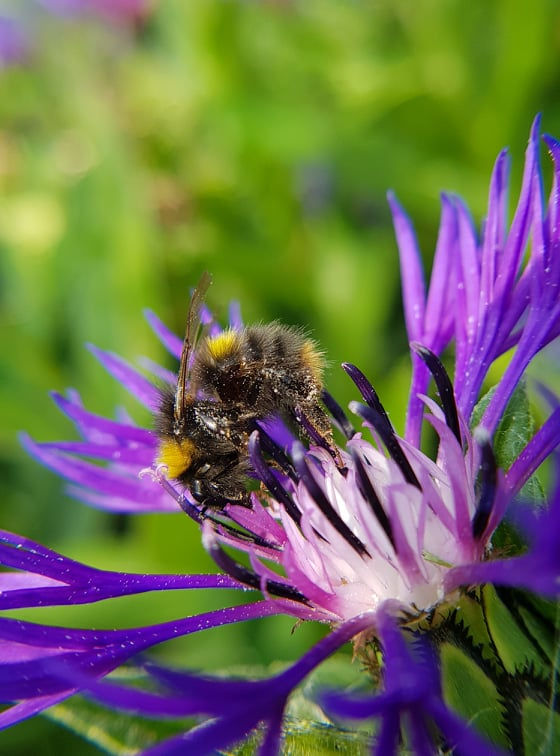
Pollinator Patch
It is a sad and well documented fact that bees and other pollinating insects such as wasps, butterflies, moths and ladybirds are in decline and we should all remember what an important job they do.
Pollinators are a crucial part of our eco system, fertilizing a vast majority of plants and trees - one in three bites of food which we eat will be reliant on a pollinator doing its job, and without them agricultural economies, our food supply and surrounding landscapes would collapse.
Clearly we all need to be 'doing our bit' to help our pollinators, and as one of our challenges for our David Bellamy Blooming Marvellous Pledge For Nature Award we have chosen 'Pollinator Patch'
Please enjoy our efforts, we have sown wildflower seeds and planted pollinator friendly plants and shrubs as well as providing a water source and insect hotel.



How to make a Pollinator Patch
Making a pollinator patch is not only incredibly important for our pollinator friends but it also can be unbelievably beautiful in your yard!! And here's the good news, no patch is too small. Every patch can make a difference!
What is pollination?
Pollination is the process of moving pollen from flower to flower, and is necessary for a plant to produce seed or fruit. Many birds and animals rely on seed for food. The plants themselves must set seed to ensure a new generation of plants. We depend on pollination too, because plants grown for food, beverages, fibers, spices, and medicines need to be pollinated.
Why plant a pollinator patch?
Pollinators are essential because they transfer pollen, helping plants to reproduce. Over one-third of our fruits and veggies we consume rely on pollinators. Installing conservation corners, pollinator patches and pathways throughout neighborhoods makes it easier for pollinators to find nectar, pollen and places to rear their young and may also absorb and reduce stormwater runoff. Also, observing pollinator preferences and behavior throughout the year is a great way for families to learn about nature.
How to make a pollinator patch
1
Find a sunny location for your
pollinator patch. At least 4 hours
of sun is recommended. Make sure there are no utility lines near
your new garden space.
2
Removing the top layer of sod might be the hardest part in making your patch. Use a flat head shovel to get just under
the sod. Try not to remove too much of your soil. Again, check for utility lines that might be in your patch,
3
To get your patch off to a
good start, sprinkle some
organic compost on top of
your new garden space.
With a shovel, dig it in with the existing soil
4
Now sprinkle 2 - 3 inches
of wood mulch over your
entire garden. The mulch
will prevent weeds from
growing and it will also help
retain moisture for the seed
bombs to remain wet.
5
Scratch away a small amount of mulch and place
seed bomb on prepared soil. Press them partially
in the ground but DO NOT BURY THEM.
6
Okay, this is really important. Everyday, water your seed
bombs generously until
plants reach approximately
four inches in height. Then
water as needed throughout
the summer.












